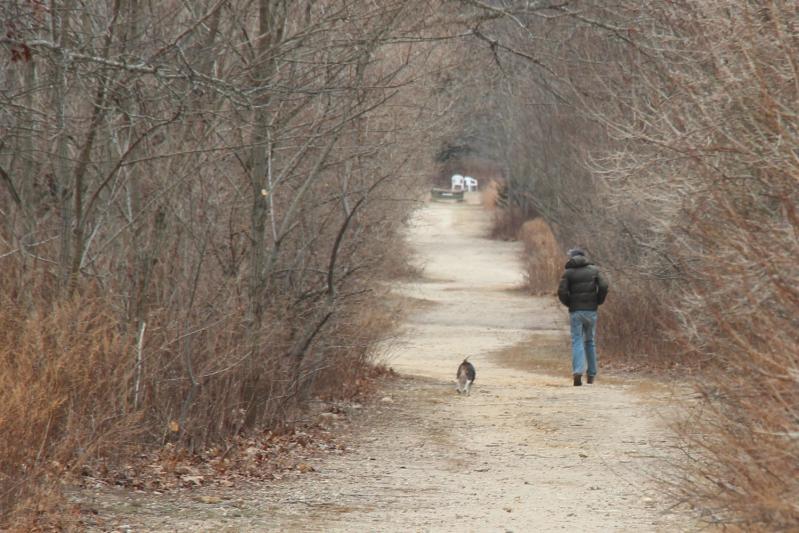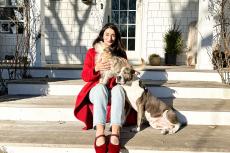The East Hampton Town Board has agreed unanimously to a proposal from Scott Wilson, the town’s director of land acquisition and management, to clear invasive plants, chiefly the autumn olive, from only an acre of the 40-acre Springs Park.
In some ways, it was a distressing win for misinformation merchants, who had placed fliers last year on cars, claiming that the Springs Park Committee was working with the town to clear the park of “almost all the beautiful trees and flowering plants.”
Mr. Wilson said that was never the plan.
Councilman Ian Calder-Piedmonte, the liaison to the Springs Park Committee, came to Mr. Wilson with the idea to try to cut through the misinformation by taking the baby step of clearing only an acre of the autumn olive, which was barely present on the property less than 20 years ago. Since then, it has choked out whole swaths of the parcel. The irony being that the people who claim to love the park seem to support its creeping presence, which is shrinking the usable area of the park.
Andy Gaites, a principal environmental analyst in the town’s Land Acquisition and Management Department and a certified arborist, cuts the autumn olive back annually.
“If we let it go for a few years, they grow so quickly that you won’t be able to get a mower over them. That means less users and less of the park available,” he said. The plant, left unmanaged, can grow five to six feet per year, he told the board Tuesday.
In the public comment portion of the meeting, Carol Buda recommended that autumn olives be removed from only a quarter-acre. “In the past when they cleared the autumn olive, we basically ended up with fields, with maybe a couple of trees here and there.” She said in the cleared areas, mugwort, another invasive, had moved in. “It’s premature to clear another large area without having a plan for what’s going to replace it.” She said multiflora rose, another invasive, was beautiful, and “an amazing habitat for birds.”
“Biologists consider invasive species such as these to be one of the two greatest threats to native plants and animals, second only to the outright loss of habitat to urban sprawl, agriculture, and industrial development,” countered Mr. Wilson.
While it might have pretty flowers, the New York State Invasive Species Information website notes that multiflora rose “is ranked among the top forest invasive plant species for the northeastern area by the United States Forest Service.” Like the autumn olive, it steals habitat from native species that are much better habitat for our native insects and birds.
“I don’t think this is as simple as we want vegetation or we don’t,” Councilwoman Cate Rogers said. “A lot of the current park users feel very strongly that this should have a more natural feeling, and not a traditional dog park that’s an open field, but I don’t think the way to successfully maintain that over the long run is to let really aggressive invasives run wild.”
A management plan was adopted for Springs Park in 2009. “One of the core tenets of the management plan was invasive species removal,” Councilman Calder-Piedmonte said. “It used to be a sort of open nursery field.” He said doing a “test patch” would allow community members to see “what was truly left,” with the end goal “an environmental benefit, without an aggressive change to the park” that could be re-evaluated going forward.
Mr. Wilson said another primary goal of the management plan was to “enhance its usefulness while improving accessibility and safety for all members of the community.” Over half of the park’s 40 acres has become a de facto dog park, arguably limiting access for large numbers in East Hampton who are not dog owners.
Further pushing back against the notion of a “clear cut,” Mr. Wilson said that, on the contrary, removing invasives would give native trees an opportunity to flourish. “The removal of olives will not cause the loss of shade, as there is currently no access to this portion of the park, but there could be. The area that we’re talking about working on is full to the rim.”
“This is a very large public park,” Councilman David Lys said. Removing invasives from an acre “is minimal to what the overall acreage is. I would prefer doing it this season.”
“I don’t want the conversation to get stalled,” agreed Mr. Calder-Piedmonte. “Because I think what we’re going to end up doing is losing the access to the park.”
Mr. Wilson said it was possible the work could be completed by the end of March.




